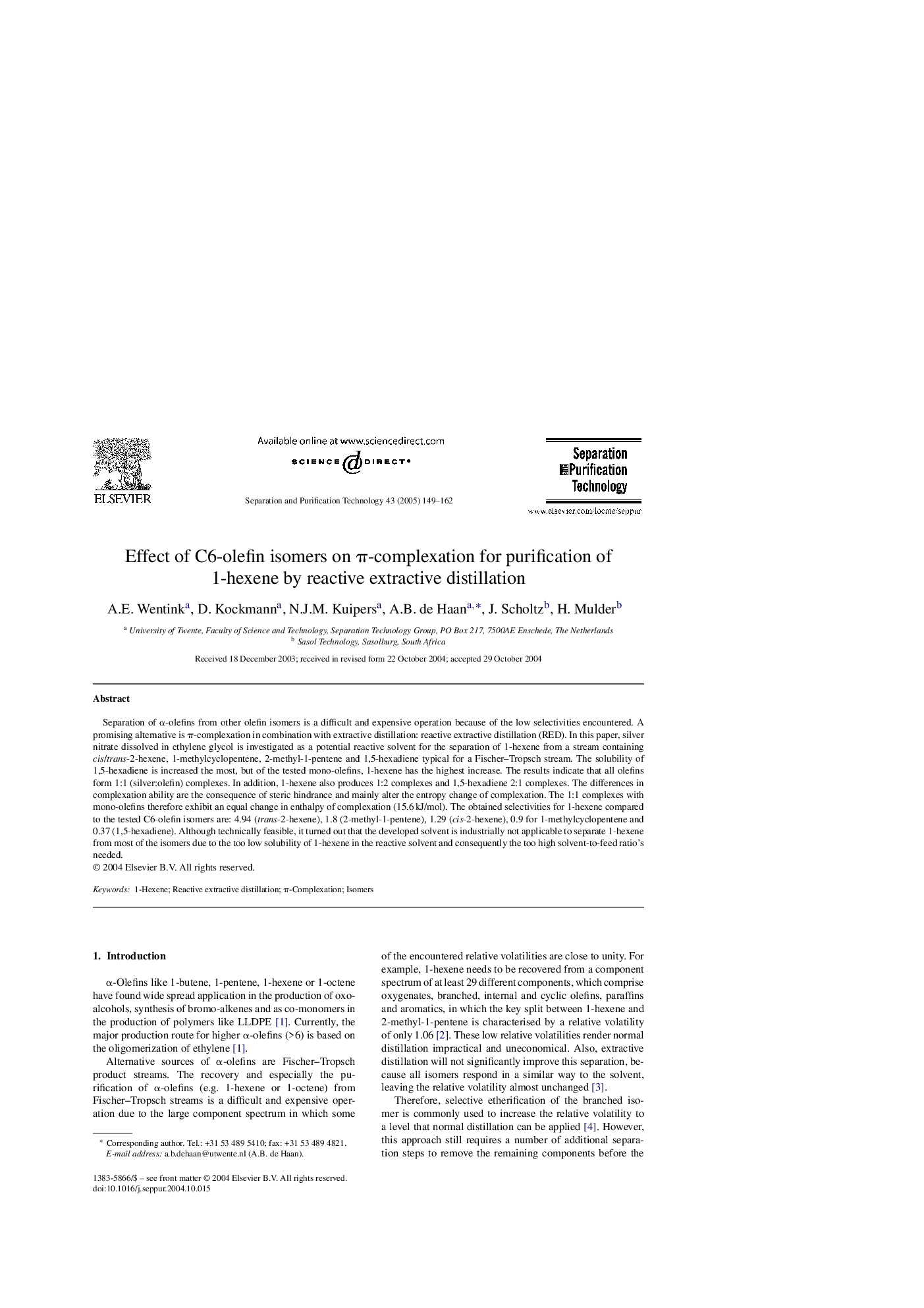| Article ID | Journal | Published Year | Pages | File Type |
|---|---|---|---|---|
| 10390050 | Separation and Purification Technology | 2005 | 14 Pages |
Abstract
Separation of α-olefins from other olefin isomers is a difficult and expensive operation because of the low selectivities encountered. A promising alternative is Ï-complexation in combination with extractive distillation: reactive extractive distillation (RED). In this paper, silver nitrate dissolved in ethylene glycol is investigated as a potential reactive solvent for the separation of 1-hexene from a stream containing cis/trans-2-hexene, 1-methylcyclopentene, 2-methyl-1-pentene and 1,5-hexadiene typical for a Fischer-Tropsch stream. The solubility of 1,5-hexadiene is increased the most, but of the tested mono-olefins, 1-hexene has the highest increase. The results indicate that all olefins form 1:1 (silver:olefin) complexes. In addition, 1-hexene also produces 1:2 complexes and 1,5-hexadiene 2:1 complexes. The differences in complexation ability are the consequence of steric hindrance and mainly alter the entropy change of complexation. The 1:1 complexes with mono-olefins therefore exhibit an equal change in enthalpy of complexation (15.6 kJ/mol). The obtained selectivities for 1-hexene compared to the tested C6-olefin isomers are: 4.94 (trans-2-hexene), 1.8 (2-methyl-1-pentene), 1.29 (cis-2-hexene), 0.9 for 1-methylcyclopentene and 0.37 (1,5-hexadiene). Although technically feasible, it turned out that the developed solvent is industrially not applicable to separate 1-hexene from most of the isomers due to the too low solubility of 1-hexene in the reactive solvent and consequently the too high solvent-to-feed ratio's needed.
Keywords
Related Topics
Physical Sciences and Engineering
Chemical Engineering
Filtration and Separation
Authors
A.E. Wentink, D. Kockmann, N.J.M. Kuipers, A.B. de Haan, J. Scholtz, H. Mulder,
